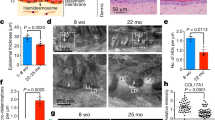The count of cambial cells decreases with age in the total morphofunctional zone of the skin. However, their number determines the stretching of the daughter cells, which, in turn, activates the Src domain of protein SH2. Twelve cambial cells is the optimal quantity, at which the SH2 domain (responsible later for full-value stretching and looping of chromosomes near telomeres in the region of epithelial cells formation) is sufficiently active, which is characteristic of the age of 20-40 and 41-59 years. If the number of cambial cells is less than 12, stretching of the nuclei and expression of SH2 domain reduce, this leading to looping of lesser sites of chromosomes, modulating the transcription; the expression of Src and RhoA proteins is imbalanced, which leads to reduction of cell proliferation, modification of the direction of the cell’s basic axis, and to hyperdesquamation. This is characteristic of the age of over 60 years. After 75 years of age the number of cambial cells in both subunits of the epidermal basal layer decreased to 7 and is close to the threshold level (6 cells), when interactions between fi elds of the two subunits are weak or zero. Therefore, despite the involvement of both subunits (14 cells), cell stretching and expression of the Src protein SH2 domain in them drop sharply, while activity of RhoA protein increased, which leads to looping of chromosomes closer to the centromeres, that is, to active development of fi broblasts, which is characteristic of subjects over 75 years of age.
Similar content being viewed by others
References
S. V. Razin, Genetika, 42, No. 2, 1605-1614 (2006).
V. I. Semkin, Klin. Gerontol., No. 9, 27-31 (2001).
K. N. Chichinadze and D. V. Tkemaladze, Uspekhi Gerontol., 21, No. 3, 367-371 (2008).
P. M. Schwartzburd, Ibid., 21, No. 3, 356-366 (2008).
A. I. Shchapova, Tsitologiya, 13, No. 9, 1157-1163 (2008).
T. M. Yavisheva and S. D. Shcherbakov, Med. Nauki, No. 2, 61-70 (2009).
T. M. Yavisheva, S. D. Shcherbakov, and I. S. Golubeva, Byull. Eksp. Biol. Med., 144, No. 11, 594-599 (2007).
T. M. Yavisheva, S. D. Shcherbakov, and L. A. Savluchinskaya, Dokl. Akad. Nauk, 404, No. 1, 125-128 (2005).
D. R. Appleton, P. J. Thompson, C. E. Donaghey, et al., Cell. Prolif., 35, Suppl. 1, 68-77 (2002).
Author information
Authors and Affiliations
Corresponding author
Additional information
Translated from Byulleten’ Eksperimental’noi Biologii i Meditsiny, Vol. 148, No. 9, pp. 326-329, September, 2009
Rights and permissions
About this article
Cite this article
Yavisheva, T.M., Shcherbakov, S.D. Age-Specific Morphofunctional Changes in Cambial Cells and Their Derivatives in Human Skin. Bull Exp Biol Med 148, 437–440 (2009). https://doi.org/10.1007/s10517-010-0731-8
Received:
Published:
Issue Date:
DOI: https://doi.org/10.1007/s10517-010-0731-8




